
Why is Skin Cancer Screening so Important?
Skin cancer is the most common of all cancers. Each year in the U.S., over 5.4 million cases of non-melanoma skin cancer are treated in more than 3.3 million people. It is also the easiest to cure, if diagnosed and treated early. When allowed to progress, however, skin cancer can result in disfigurement and even death. Skin exams are the best way to ensure that you don’t become a statistic in the battle against skin cancer.
What are the Types of Skin Cancer?
There are three main types of skin cancer: basal cell carcinoma, squamous cell carcinoma, and melanoma. Because each has many different appearances, it is important to know the early warning signs. Look especially for change of any kind. Do not ignore a suspicious spot simply because it does not hurt. Skin cancers may be painless, but still dangerous. If you notice one or more of the warning signs, call our office for an appointment immediately. You can read more about the different types of cancer on our Skin Cancer Treatments page.
The Warning Signs
The ABCDs of Melanoma – Melanoma is the deadliest form of skin cancer. However, when detected early, melanoma can be effectively treated. A skin growth that increases in size and appears pearly, translucent, tan, brown, black, or multicolored.
A mole, birthmark, beauty mark, or any brown spot that:
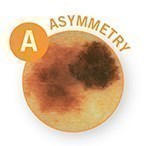 A = Asymmetry
A = Asymmetry
One half is unlike the other half.
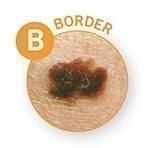 B = Border
B = Border
An irregular, scalloped or poorly defined border.
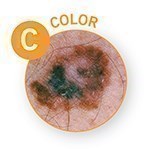 C = Color
C = Color
Is varied from one area to another; has shades of tan, brown or black, or is sometimes white, red, or blue.
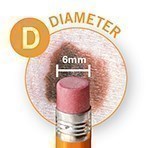 D = Diameter
D = Diameter
Melanomas are usually greater than 6mm (the size of a pencil eraser) when diagnosed, but they can be smaller.
 E = Evolving
E = Evolving
A mole or skin lesion that looks different from the rest or is changing in size, shape, texture or color.
Other Types of Skin Cancer
When checking your skin, please look for signs of these other suspicious spots.
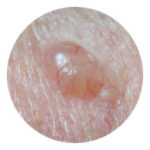 Basal Cell Carcinoma (BCC) are flesh colored, pearly bumps or pinkish patch of skin.
Basal Cell Carcinoma (BCC) are flesh colored, pearly bumps or pinkish patch of skin.
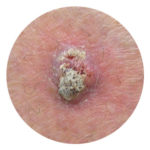 Squamous Cell Carcinoma (SCC) are red firm bumps, scaly patches or sores that heal and then return.
Squamous Cell Carcinoma (SCC) are red firm bumps, scaly patches or sores that heal and then return.
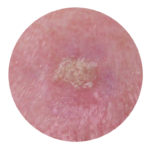 Actinic Keratoses (AKs) are dry, scaly patches or spots. (Precancerous Growths)
Actinic Keratoses (AKs) are dry, scaly patches or spots. (Precancerous Growths)
Protection Stops It, Too
About 90 percent of non-melanoma skin cancers are associated with exposure to ultraviolet (UV) radiation from the sun. Sunscreen alone is not enough, however. Read our full list of skin cancer prevention tips and the Surgeon General’s Call to Action to Prevent Skin Cancer
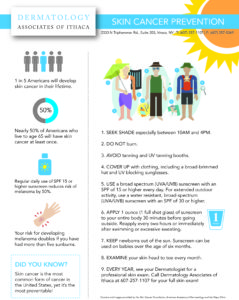 What Type of Testing is Used to Find Skin Cancer?
What Type of Testing is Used to Find Skin Cancer?
If an area on the skin looks abnormal, a biopsy is usually done. The provider will numb the skin and remove a piece of the skin to send for testing. A pathologist then looks at the tissue under a microscope to check for cancer cells. We recommend testing of all suspicious lesions because skin cancer is easier to cure if it is found before it grows deeper or spreads.
To learn more about Skin Cancer Prevention, please click here for our handout .
Helpful Links
Actinic Keratoses Handout
Seborrheic Keratoses Handout
Skin Cancer Prevention Handout
Sun Protection Handout
The Surgeon General’s Call to Action to Prevent Skin Cancer
Want a Skin Cancer screening? Call Dermatology Associates of Ithaca, in Ithaca and Cortland, NY at (607) 257-1107 to schedule an appointment!






